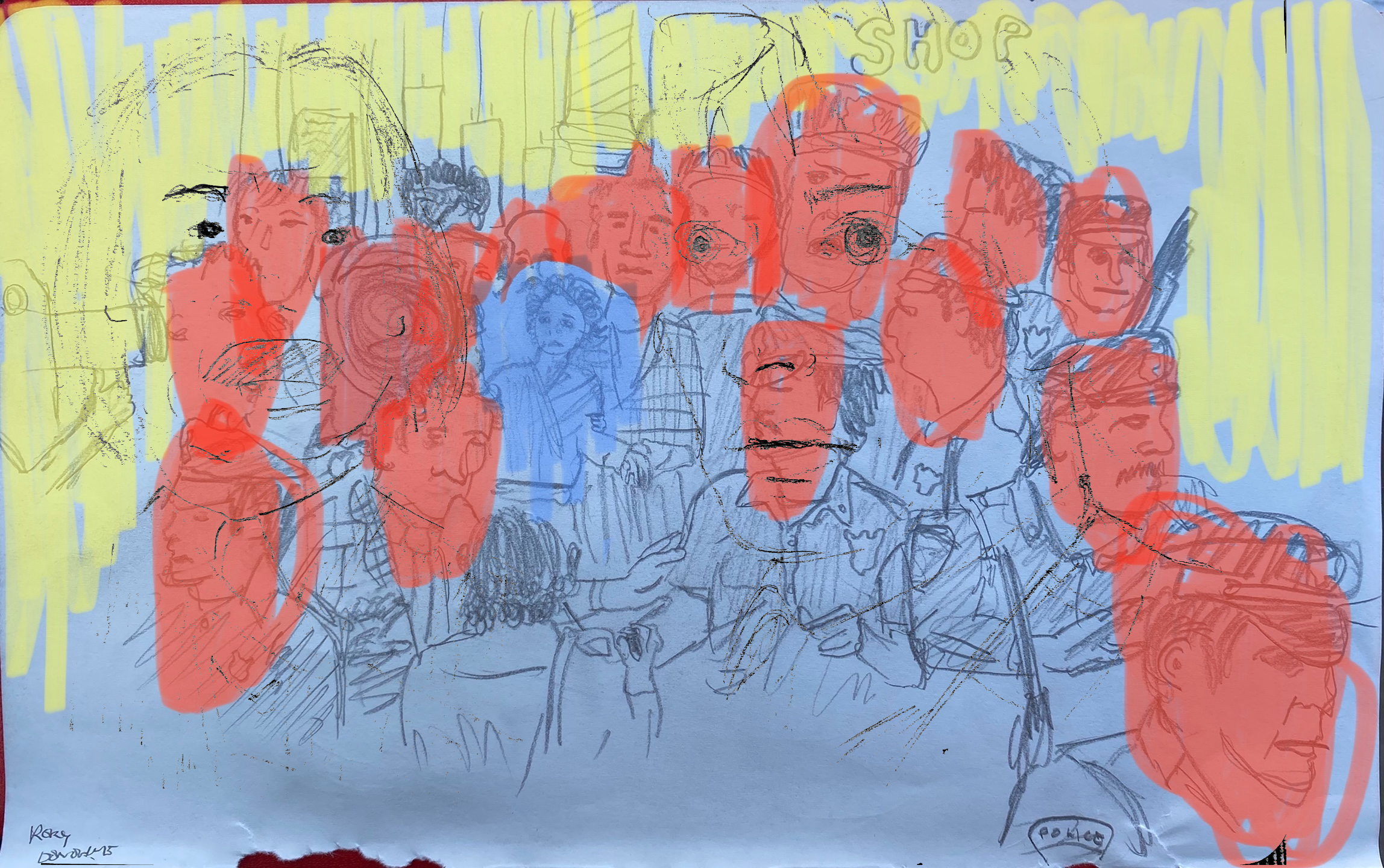Be Gay Do Crime: On LGBT Representation in Dog Day Afternoon and the New Hollywood Era
 Content warning: this article contains brief mentions of suicidal ideation and attempts, historical homophobia and racism.
Content warning: this article contains brief mentions of suicidal ideation and attempts, historical homophobia and racism.
The year was 1972, and it was a hot summer day when John Wojtowicz and his two partners in crime would attempt to rob the Chase Manhattan Bank in Brooklyn, NY. It was a botched-robbery-turned-hostage-situation that would go down in infamy as one of the first instances of what we have come to refer to as a “media circus.” A few years later, it would be adapted into Sydney Lumet’s 1975 film, Dog Day Afternoon, starring Al Pacino as Sonny, the film counterpart of Wojtowicz.
To go back to where this all started, in 1971, Wojtowicz would meet Liz Eden, a trans woman, after getting involved with New York City’s rising gay liberation movement. The two would get married later the same year; however, it wasn’t necessarily a happily ever after as the marriage was reportedly a bit rocky as Eden continued to suffer from depression and suicidal thoughts over the first year of marriage due to her desire to transition and financial inability to do so. After a suicide attempt and violent domestic fight in 1972, Eden was institutionalized. Shortly thereafter, Wojtowicz hatched a plan. The plan, which was supposed to be easy and foolproof would become anything but, and just about everything did not go as expected from an accomplice bailing to a lack of money in the bank itself. What happened next? Well, I won’t give away the ending here, but for those who are interested, the Student Life Cinema will be playing Dog Day Afternoon on February 9th at both 7 pm and 10 pm.
Before the New Hollywood era (mid 1960s – early 1980s), there had of course been efforts to represent diverse identities in cinema, it was the final dismantling and abolishment of the Hays Code in 1968 that truly allowed for a new, experimental time in cinema where few things were off the table. The Hays Code, also known as the Motion Picture Production Code, was a self-imposed set of guidelines and restrictions that had been created to end controversies and keep films from being censored or banned by abiding by certain moral rules and ideas. The main points of the code were these: “No movie should lower the moral standards of those who see it" and "The sympathy of the audience shall never be thrown to the side of crime, wrongdoing, evil or sin.” (Source: Mondello) As you can imagine, this put a kebosh on many things being represented or talked about in films. For one example, it’s the reason married people are seen sleeping in separate beds in the media produced at this time. It also forbade things like interracial relationships, most sexual behavior (especially that considered to be “deviant”), or things considered divergent from the natural order, which usually pertained to anything perceived as LGBT, drug use, mockery of the church, and so on.
After the end of the Hays Code came the New Hollywood era, which was a time known for unconventional filmmaking as filmmakers were abandoning the studio sets for the authenticity of shooting on location. Many retrospectives consider this one of the most daring times in the history of film. The movies were considered more daring and real or edgy in both subject matter and technique, as people were less interested in the studio fabricated glitz and glamour of before, now opting instead for the cinema veritas approach they saw in European films at the time. This was specifically influenced by the films of the French New Wave, which was simply a technique that attempted to inject a realism into films by depicting more natural and realistic movement along with dialogue or character interactions. Up and coming hopeful directors and film school graduates were very interested in pushing boundaries and exploring taboos or addressing the current events and state of society in their work, largely in part due to all the major social changes and transformations that were taking place in the late 60s and 70s. The abolishment of the Hays Code opened the gates to talk about things that were previously forbidden, allowing creatives to dig into topics like sex, drugs, social issues, etc. that were at the forefront of many people’s minds. Filmmaking at the time was no doubt influenced by things like the Vietnam War, free love and hippie counterculture, the second-wave feminist movement, the sexual revolution, and the beginnings of the gay rights movement, which was becoming too loud to ignore, as well as Watergate and the Civil Rights Movement, which was also becoming quite powerful. People were taking more chances with film than before and there was a cynicism that pervaded these films as well, which reflected how people felt about their world at the time. The New Hollywood era would go on to be defined by this quote: “The New Hollywood narrative would be realistic and unflinching, and the New Hollywood hero would be young and disenchanted—they would reflect the new movement growing in America of a generation brought up to be anti-authoritarian, suspicious of everyone, and heavy on cynicism… In these traits, New Hollywood reflected New America.” Other well known examples of films from this time are The Graduate (1967), Bonnie and Clyde (1967), Easy Rider (1969), Bob & Carol & Ted & Alice (1969), and The Badlands (1973).
During this time period, there were also the very early seeds of more open LGBT representation in film. Creators were no longer constrained by the Hays Code, which confined them to just queer coding characters. While there were still problems with incorporating LGBT characters into films, there was certainly more freedom, and for some, more interest in bringing these stories or people out of the closet and onto to the screen. One of the more famous examples of this would be the play, The Boys in the Band, written by Matt Crowley. It would be adapted into a feature length film in 1970 and considered groundbreaking for the fact that nearly all the main characters were either gay or bisexual men. The way this film gave audiences a glimpse of actual gay culture and friend groups, however dramatized it may be, still had an authenticity and unabashedness to it that intrigued a large audience. This was simply something that hadn’t really been done before, and it subverted old ideas, such as the trend for queer characters to die or be villains. Another new element in this film was the way that the characters are not just the same flat stereotype for gay/bisexual men, but rather all have individual personalities. This would change the way queer people would be represented in film going forward as it was able to push the door open some for films that would come afterwards. This is the case for Dog Day Afternoon, which was not expressly made as a queer film, but rather as the retelling of a captivating true story with players who just happened to not all be cisgendered or heterosexual. For the time, it was a bold move not to omit these elements but rather include them and even more so use the relationship between these two “outsiders” (Wojtowicz and Eden) to be the main emotional pull and heart of the story.
In many ways, Dog Day Afternoon might subvert standard cliches that seem to haunt much media from this time by not leaning on these stereotypes in both writing and performance and also by treating the central relationship between the characters like any other couple on screen. They are not set up to be mocked or condemned but portrayed with sincerity, about as sensitively as could be done in the 1970s. The characters are given humanity and realness. The film isn’t trying to say that its characters are just deviant criminals or villains because of their sexual orientations and genders. Neither character in this main pair is treated as a villain or even as a bad person, but rather as people who have been beaten down and hurt by society and its institutions in a myriad of ways. Is it the best representation? No, but at a time when things like homosexuality and being transgender were still largely considered forms of mental illness, showing audiences that people in the LGBT community were just human beings like everyone else was pretty radical for its time, and perhaps helped even in a small way to further evolve LGBT representation on the screen for the future.
And while the story this film tells may not have a happy ending, ultimately there is a bright spot. The money made from the selling of the story rights did, in the end, help Liz Eden to finally be able to transition as she had desired.
Written by: Victoria Weaver
Art by: Rory Donohue


